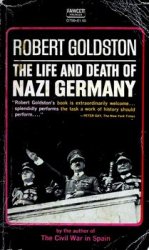In an equally radical but more widely appreciated development, Ian Hodder proposed a postprocessual archaeology that would focus on themes undervalued or ignored in processual archaeology, such as the role of individuals and the ideological components of their actions including their intentions, beliefs, and symbols. His model, reminiscent of Taylor’s, assumed that beliefs interceded between people and their artifacts. Like-minded scholars agreed that culture was better understood not as an organism, but instead as the product of thinking more similar to a literary text.
Books such as this encyclopedia can be created by one or more people, and then read and differently interpreted by others to produce new and varied texts. In short, for Hodder, culture was a form of symbolic information similar to a language whose organization and interpretation was mediated by its expression in speech, writing, and other symbols including the material culture patterns examined by archaeologists.
In addition to this model of the relation between people, objects, and culture, Hodder also contested the importance of science promoted by earlier archaeologists. Where once science and the philosophy of science had served to justify innovations and changes in archaeological method and theory, they became for him obstacles that impaired the interpretive or reading process.
Although named by Hodder and unified by its general opposition to processual archaeology, post-processual archaeology in the 1990s was actually a mix of many archaeologies reflecting differing conceptions of culture and society. Anyone with an interest in questions such as religion, gender, semiotics, or even Marxist theory was so labeled. Processualists, as well as others estranged from processual archaeology such as Behavioral archaeologists and Darwinian archaeologists, also continued to contribute to the plurality of archaeologies evolving since the 1980s. As a group, despite their great differences with respect to the philosophy of science, they all share to relative degrees an interest in smaller-scale phenomena associated with the causal properties of material culture and individual activities. Although no unified understanding of culture or society has gained preeminence since the mid-1980s, a focus on practice and agency theories may do so in the future.
As archaeologists have searched for new ways to conceptualize culture, artifacts, and activity, several trends have emerged including a renewed interest in material culture studies and a more critical approach to long lived dichotomies (e. g., material/ideal, human/ animal, people/things, natural/supernatural, belief/ action) associated with the study of society and culture. As processual and postprocessual scholars alike have moved into new territory, they have all recognized to some degree the limitations of assuming these categories are real rather than analytical tools whose utility should be judged on a case-by-case basis.
Behavioral archaeologists and Selectionists, for example, have been intensely interested in experimental archaeology because both models of interpretation, specifying that an artifact’s performance characteristics in activities is central. For Selectionists, performance variability leads to variable fitness in evolving populations; for behavioralists, performance characteristics provide a window into the causal contributions an object makes to an on-going chain of events in its life history. In both cases, albeit for different reasons, the distinction between animate people and inanimate things has not been helpful. For the Selectionist the extended phenotype unifies people and things under one unit of selection. Behavioral archaeologists recognize that there are no behaviors without material objects, and that topics such as communication, archaeological site formation processes, ceramic design, or prehistoric religion, become clearer when people-object interactions are treated as one unit of analysis. Similar to practice theory (described below), this approach allows behavioralists to incorporate the beliefs, intentions, and properties of objects into one material object of study.
For decades, it was common to assume that traces of religion and other topics (e. g., gender) were inherently more difficult to identify archaeologically because they were commonly classified by such dichotomies as immaterial, lacking utility, and nonrational. But as Kent V. Flannery and Joyce Marcus have demonstrated in Oaxaca, the material evidence of religion is relatively robust when one looks for it. Practice-oriented perspectives (the author would include but not subsume behavioral archaeology here) build classifications based on interactions rather than normative assumptions about them. They therefore see culture or society as the emergent property of practices. Such perspectives have demonstrated during the last 20 years that theorizing the relationship between people and objects facilitates identification and interpretation far more archaeological variability than had previously been recognized or imagined.




 World History
World History









